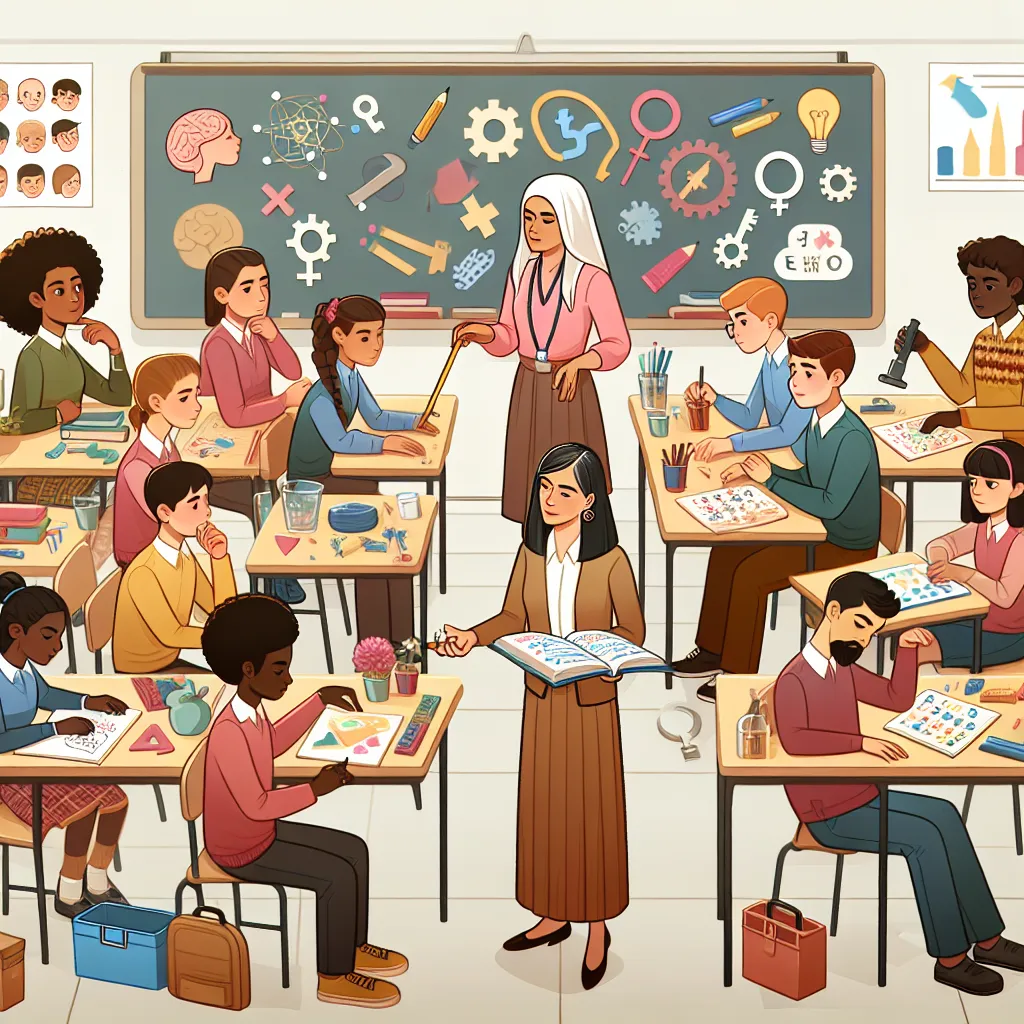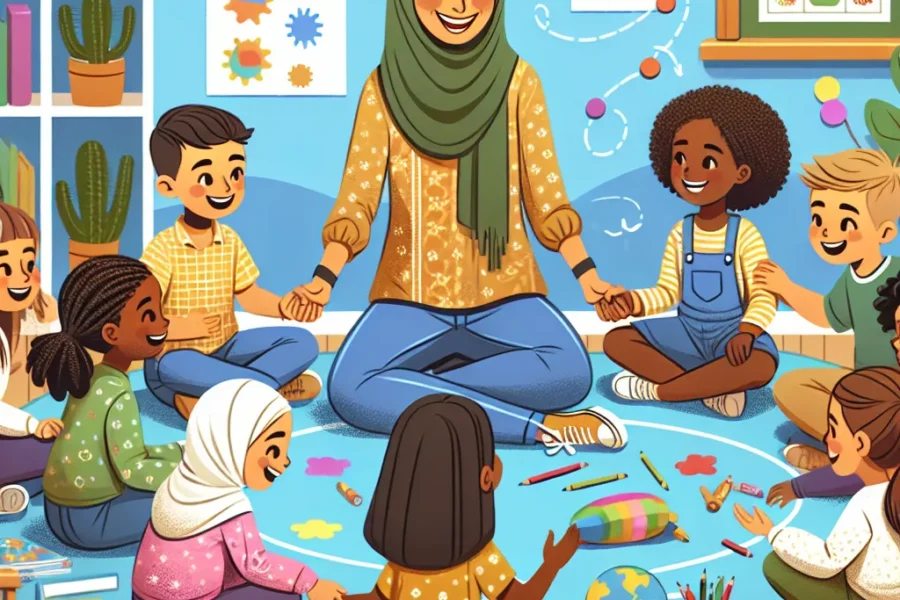Differentiating instruction for gifted learners requires a multifaceted approach that addresses their unique learning needs. These students often require opportunities for deeper exploration and a more complex understanding of subjects than their peers. This blog post focuses on various strategies educators can employ to challenge and nurture gifted learners, ensuring they remain engaged and motivated in their educational journey.
If you are looking for legitimate IQ Tests which pass the entry bar for Mensa, see our IQ Tests.
**1. Understanding the Needs of Gifted Learners**
Before tackling the strategies themselves, it’s essential to grasp the core needs of gifted students. These learners typically demand:
– Accelerated learning due to their ability to grasp concepts swiftly.
– Enrichment activities to stimulate their intellectual curiosity.
– Opportunities for developing problem-solving and critical-thinking skills.
– An environment that encourages creative and independent thinking.
– Social-emotional support to help them navigate their heightened sensitivities and unique social dynamics.
**2. Pre-Assessment for Tailored Instruction**
Start with a pre-assessment to determine the current knowledge level of gifted learners. This assessment can include standardized tests, diagnostic evaluations, and informal assessments like observations and student interviews. By understanding what these students already know, educators can tailor instruction to meet their advanced needs more effectively.
**3. Curriculum Compacting**
Curriculum compacting is a strategy wherein educators streamline the regular curriculum by eliminating content that students have already mastered. This method not only prevents redundancy but also frees up time for more challenging and enriching activities. Steps to compact the curriculum include:
– Identifying learning objectives for the unit.
– Assessing students’ pre-existing knowledge and skills.
– Modifying instruction to exclude already mastered content.
– Planning enrichment or acceleration activities to replace the omitted material.
**4. Enrichment Clusters**
Enrichment clusters involve grouping students by shared interests rather than ability levels. This allows gifted learners to dive deeper into subjects they are passionate about. These clusters can cover a wide range of topics, from science and math to literature and the arts. Educators can use the following steps to implement enrichment clusters:
– Conduct interest surveys to find common themes.
– Create and facilitate projects, experiments, or research-based activities.
– Encourage collaboration and problem-solving within the group.
– Provide opportunities for students to share their findings with peers and the broader school community.
**5. Tiered Assignments**
Tiered assignments involve creating different levels of tasks that tap into the same learning objective but vary in complexity, depth, and abstractness. This strategy ensures that all students work at appropriately challenging levels. Here’s how to build tiered assignments:
– Determine the core objectives and skills of the lesson.
– Design multiple tasks that represent varying degrees of difficulty.
– Allow students to choose or assign tasks based on their readiness.
– Evaluate student work based on the rigor and quality of their performance.
**6. Independent Projects**
Encouraging independent projects provides gifted learners with the autonomy to pursue topics of personal interest. These projects allow students to set goals, plan their research, and present their findings in creative ways. Steps to guide independent projects include:
– Helping students select meaningful and challenging topics.
– Providing resources and mentorship throughout the project.
– Setting up regular check-ins to monitor progress and provide feedback.
– Creating forums (e.g., presentations, reports, or digital portfolios) for students to showcase their work.
**7. Integrating Technology**
Technology offers a vast array of tools that can significantly enhance the learning experience of gifted students. These include:
– Online learning platforms that offer advanced courses and materials.
– Educational software that provides interactive problem-solving challenges.
– Digital tools for research, collaboration, and presentation (e.g., Google Scholar, collaborative apps, and multimedia creation tools).
**8. Socratic Seminars**
Socratic seminars encourage critical thinking and in-depth discussion about complex texts or ideas. In a Socratic seminar, the teacher acts as a facilitator while students discuss open-ended questions. This method can be particularly effective for gifted learners. Facilitate a successful Socratic seminar by:
– Selecting challenging, thought-provoking texts or topics.
– Creating a safe and respectful environment for open dialogue.
– Encouraging students to ask questions, support their responses with evidence, and build on each other’s ideas.
**9. Acceleration**
For some gifted students, acceleration might be the most appropriate approach. This can take various forms, such as:
– Grade skipping: Advancing a student to a higher grade level.
– Subject acceleration: Allowing a student to study a particular subject at a more advanced level while remaining with their age peers for other subjects.
– Early entrance: Letting younger-than-typical students start school earlier.
Each form of acceleration should be carefully considered with educators, parents, and the student to ensure it’s the best fit.
**10. Cross-Disciplinary Learning**
Gifted students can benefit tremendously from cross-disciplinary learning, which integrates multiple subjects into a single coherent learning experience. Examples include:
– STEAM (Science, Technology, Engineering, Art, and Mathematics) projects that require knowledge from various fields.
– Thematic units that revolve around a central concept explored through different subject lenses.
– Encouraging students to draw connections between their diverse interests and academic content.
**11. Providing Leadership Opportunities**
Gifted learners often exhibit strong leadership capabilities. Providing them with leadership roles can help them develop crucial life skills while also enriching their learning experience. Ways to foster leadership include:
– Organizing student-led initiatives or clubs.
– Designating project leaders for group activities.
– Encouraging peer mentoring where gifted students help their classmates.
**12. Offering Advanced Placement and Honors Courses**
Offering advanced placement (AP) or honors courses is a traditional yet effective way of catering to the needs of gifted high school students. These courses are designed to challenge students and prepare them for college-level work. Ensure that:
– The curriculum is sufficiently rigorous to push the students’ limits.
– Teachers receive training to handle the unique demands of AP and honors courses.
– There are support systems in place to help students balance the added workload.
**13. Social-Emotional Learning (SEL)**
Gifted students often face social-emotional challenges, such as perfectionism, heightened sensitivity, and social isolation. Integrating SEL into their curriculum can help them develop resilience, emotional intelligence, and interpersonal skills. Effective SEL strategies include:
– Direct teaching of SEL skills, such as emotional regulation and conflict resolution.
– Providing a supportive classroom environment where students feel safe to express their emotions.
– Encouraging extracurricular activities that foster social interaction and teamwork.
**14. Involving Parents and Guardians**
Parents and guardians play a crucial role in the education of gifted learners. Regular communication and collaboration between teachers and families can ensure that the educational strategies are aligned and effective. Strategies for involving parents and guardians include:
– Keeping them informed about their child’s progress and needs.
– Offering resources and workshops to help them support their child’s learning at home.
– Encouraging them to participate in school activities and decision-making processes.
**15. Professional Development for Educators**
Educators need ongoing professional development to stay abreast of the latest research and strategies for teaching gifted learners. Schools should invest in training that covers:
– Differentiation techniques.
– Gifted education theories and practices.
– Social-emotional support for gifted students.
– Use of technology in gifted education.
**16. Peer Collaboration and Networking**
Building a network of peers who face similar educational challenges can be immensely beneficial for gifted students. Establishing collaboration opportunities can take the form of:
– Collaborative projects that require teamwork and mutual support.
– Participation in local, national, or international competitions or conferences.
– Online forums and groups where gifted students can connect and share ideas.
**17. Reflective Practices**
Encourage gifted learners to engage in reflective practices to develop self-awareness and a more profound understanding of their learning processes. Methods to foster reflection include:
– Keeping learning journals where students document their thoughts, challenges, and milestones.
– Regular self-assessments to evaluate strengths and areas for improvement.
– Guided reflection sessions where students discuss their learning experiences and set future goals.
**18. Providing Real-World Experiences**
Connecting academic content to real-world applications makes learning more meaningful for gifted students. Strategies to provide real-world experiences include:
– Field trips that offer hands-on learning opportunities.
– Internships or mentorship programs in areas of interest.
– Community service projects that allow students to apply their knowledge and skills to help others.
**19. Utilizing Questioning Strategies**
Using higher-order questioning techniques can stimulate critical thinking and deeper understanding. Bloom’s taxonomy provides a framework for creating questions that challenge students at various cognitive levels:
– Knowledge: What are the key facts or concepts?
– Comprehension: Can you explain what this means?
– Application: How would you use this information in a real-world context?
– Analysis: What are the underlying components or structures?
– Synthesis: Can you combine elements to create something new?
– Evaluation: How would you assess the validity or quality of this idea?
**20. Celebrating Diversity**
Finally, it’s essential to recognize and celebrate the diversity of gifted learners. Each student brings unique strengths and perspectives to the learning environment. Encourage a culture of inclusivity and respect by:
– Valuing and incorporating diverse cultural backgrounds and experiences.
– Promoting equity in access to gifted programs and resources.
– Celebrating the achievements and contributions of all students.
In conclusion, differentiating instruction for gifted learners is a dynamic and ongoing process that requires careful planning, creativity, and a deep understanding of each student’s needs. By employing a variety of strategies, educators can create a rich and supportive learning environment where gifted students can thrive.



Leave a Comment